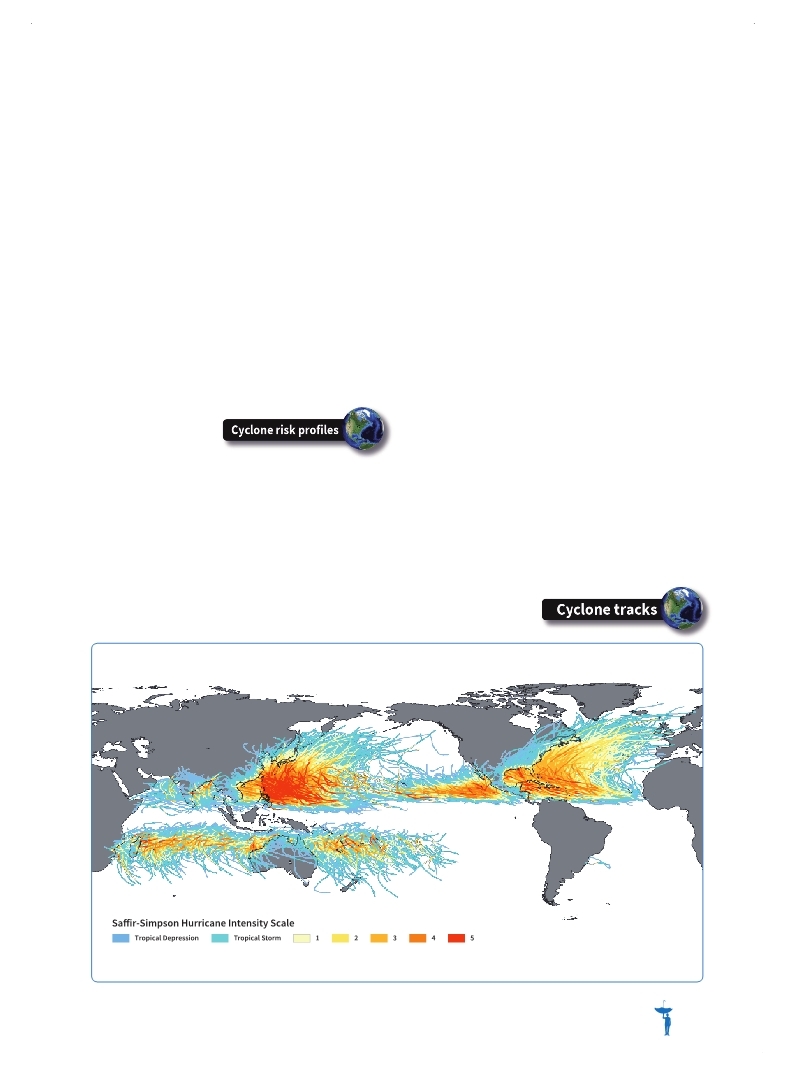 |
Global Assessment Report on Disaster Risk Reduction 2015
Making development sustainable: The future of disaster risk management |
 |
Global Assessment Report on Disaster Risk Reduction 2015
Making development sustainable: The future of disaster risk management |
|
|

67
Figure 3.14 shows the 15 countries (excluding SIDS) where the highest proportion of capital stock could be lost with a probability of 10 per cent over a fifty-year period (500-year PML). As can be seen, these potential losses are important, representing between 2 and 12 per cent of the total capital stock for these countries.
These losses are equivalent to 800 per cent of annual capital investment in Trinidad and Tobago, 100 per cent of annual capital investment in Peru and 90 per cent in Japan. To avoid systemic risk, it is important to factor contingent liabilities into international loans and other financial instruments.
Tropical cyclones
Global average annual loss from recurrent cyclone winds and storm surge is estimated at US$80 billion, which is equivalent to 1.4 times the total public health expenditure in Africa or 85 per cent of public education expenditure in Australia and New Zealand combined.
The physical intensity of tropical cyclones is determined by their wind speeds, which affect both coastal and inland areas. Historically, the highest concentration of cyclonic wind has been in the Western Pacific (Figure 3.15). The weakest storms take place near the equator, in their first stages of development; over land, as they run out of energy; and in the mid-latitudes due to the cooler temperature of the water.17 Given the concentration of economic assets and population along the coasts in many countries, risk is heavily influenced by exposure. However, in low and middle-income countries the vulnerability of building stock is an important risk factor which increases in weight in the case of low-intensity cyclones (UNISDR, 2011a
UNISDR. 2011a,Global Assessment Report on Disaster Risk Reduction: Revealing Risk, Redefining Development, Geneva, Switzerland: UNISDR.. . Strong winds and low air pressure in the eye of the storm may also cause storm surges up to 10 metres high. In contrast to wind, storm surge can only contribute to significant damage along the coast, depending on the slope of the seabed in the area where the cyclone makes landfall
(Source: NASA.18)
Figure 3.15 Worldwide historical tropical cyclone tracks
|
 
Page 1Page 10Page 20Page 30Page 40Page 50Page 57Page 58Page 59Page 60Page 61Page 62Page 63Page 64Page 65Page 66Page 67Page 68->Page 69Page 70Page 71Page 72Page 73Page 74Page 75Page 76Page 77Page 78Page 79Page 80Page 81Page 90Page 100Page 110Page 120Page 130Page 140Page 150Page 160Page 170Page 180Page 190Page 200Page 210Page 220Page 230Page 240Page 250Page 260Page 270Page 280Page 290Page 300Page 310
|
|
 
|
 
|
